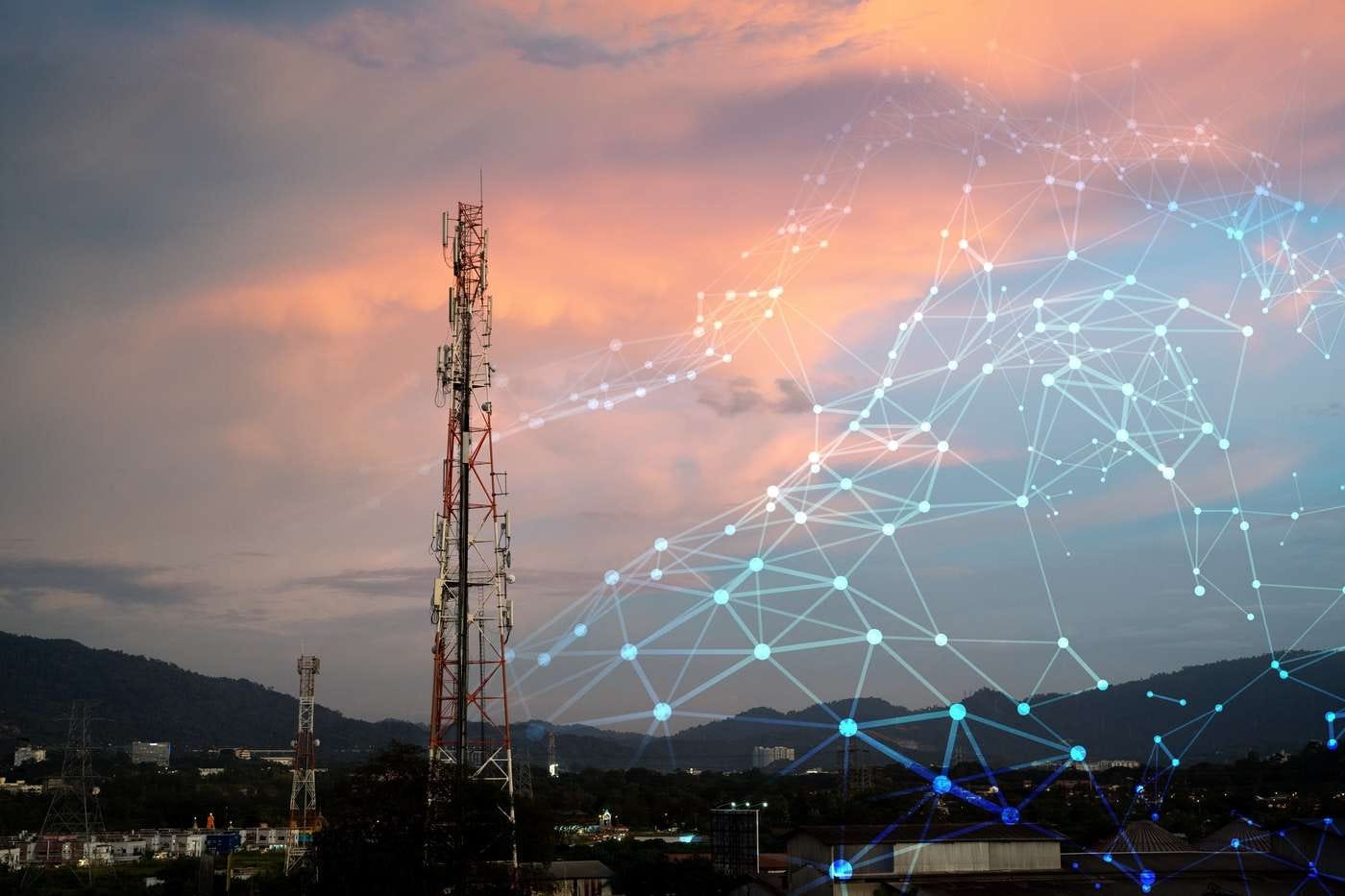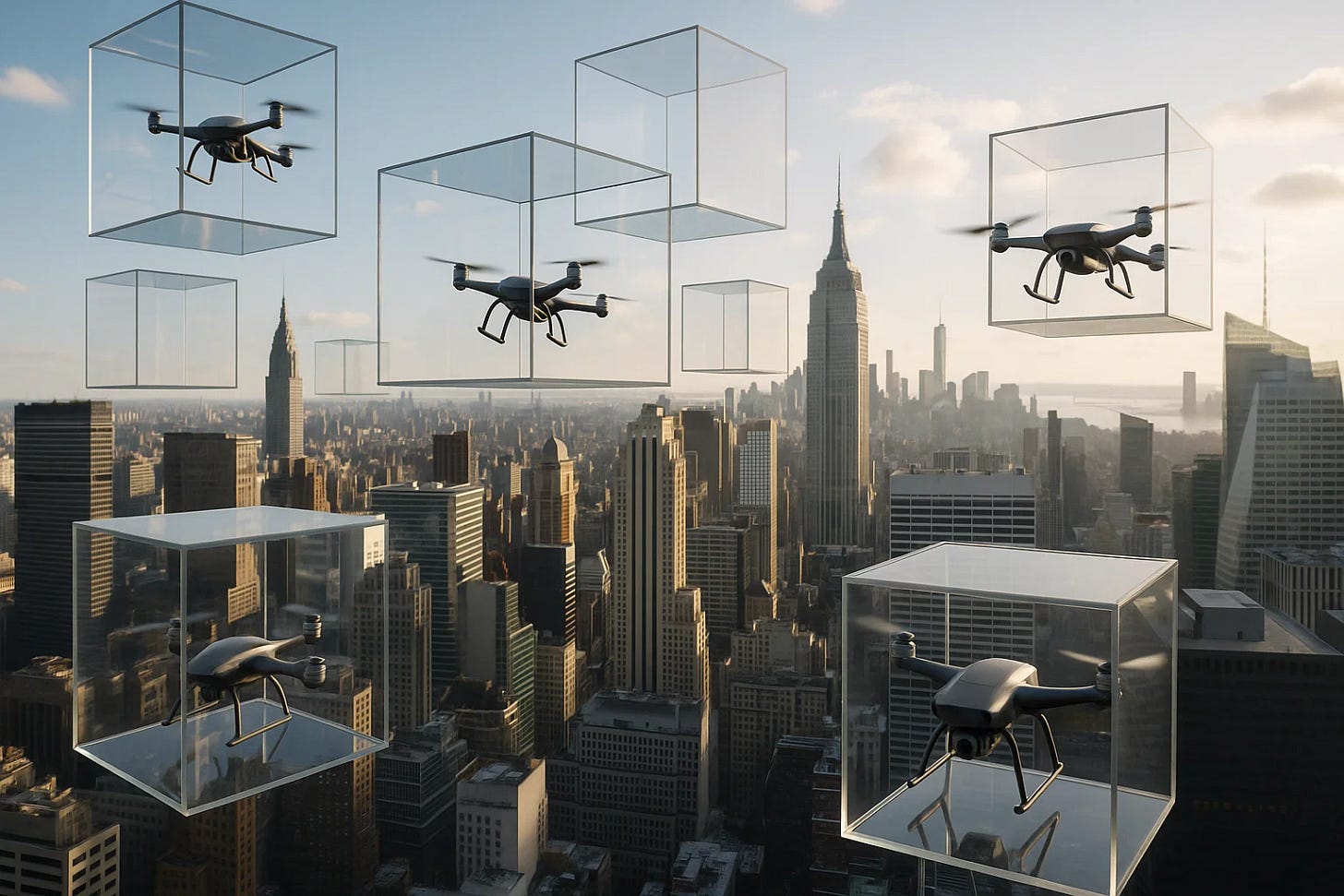Zero-Gravity Zoning, Airspace Arbitrage, and The 30 Trillion Dollar Market
Why Every Rooftop Can Be a Drone Superhighway
To see what’s in front of one’s nose needs a constant struggle - George Orwell
Developing Infrastructure
The skies are no longer the exclusive domain of traditional aviation. With the rise of drones and vertical takeoff and landing (VTOL) aircraft, new technologies and the promise of faster logistics are reshaping our cities and infrastructure. But to fully unlock the potential, we need to think about how we manage the airspace.
Air rights are tradable assets, just like spectrum rights were for telecommunications. Through a free-market approach, airspace rights can be efficiently allocated, managed, and leveraged, unlocking massive economic value while promoting competition and innovation.
Private-market solutions can manage low-altitude airspace and allow the future of drone transportation to flourish. Decentralization is key, providing both the flexibility and incentives necessary for competition to thrive in a rapidly evolving industry.
A New Global Asset Class
Drone technology is creating new growth opportunities and challenges in urban airspaces. Just as spectrum rights were auctioned off to drive mobile technology, the legal and permitted airspace needed for drones to operate in low-altitude airspace is a scarce resource.
Air rights auctioning and its derivatives are critical in unlocking this market. Ownership and the ability to buy an option, lease, or sell air rights are paramount. Property owners already control the airspace above their land up to 500 feet, but they are often unaware of the value that this airspace can generate in the context of drones and other ancillary services. By turning these air rights into a tradable commodity, we incentivize investment in the low-altitude economies’ infrastructure while promoting competition.
Just as mobile network providers have leased spectrum rights to run their networks and use the air rights parcels to erect cell towers for density, property owners can rent or sell the air rights above their properties, creating an efficient, decentralized system. This model empowers landowners to unlock new revenue streams and ensures that the low-altitude economy has the dedicated paths to operate safely and efficiently.
What’s New Under The Sun?
One of the most practical tools in urban planning is Transferable Development Rights (TDR), which allows landowners to sell, lease and transfer their rights in specific
areas. The model ensures that cities can grow while preserving historically and culturally important spaces. Effectively, you can move the 3D airspace above one structure to another and build higher where previously you were restricted.
This model has created billions of dollars of wealth and led to the increased use of land and air and the increased densification and innovation in cities like New York, Chicago and London.
This is directly applicable to drone corridors. Landowners rent their airspace rights to drone operators who can use these corridors for their drone traffic. This allows drone companies to fly the drones without having to be in the business of infrastructure, and it incentivizes the air rights owners to permit drone access.
The TDR model works because there is a sending parcel. The owners want to free up cash. The receiving area’s owner buys these rights (or an option) to increase the density, including creating taller buildings, constructing infrastructure for the community or protecting meaningful views.
Airspace above highways, railroads, and public infrastructure can be rented to drone operators, with property owners in those areas holding the rights to lease the airspace for low-altitude operations.
A Market Approach
A free-market approach of decentralized air rights ensures that drone operators compete for access to airspace. This is crucial for innovation and competition.
The auctioning and renting of airspace rights, much like the auctioning of spectrum or offshore energy sites allows drone operators to optimize routes based on real-time demand. In the same way that telecom companies adapt to changing market conditions, drone companies can adjust their operations based on evolving technologies and business needs.
Just as spectrum auctions have generated billions for governments, airspace rentals and corridor auctions will generate significant revenue for local and federal authorities. These funds can be reinvested into urban infrastructure or used for safety standards and innovations in air traffic management.
By embracing property rights and property owners, we reduce bureaucratic inefficiencies and allow for faster decision-making with local, decentralized knowledge. Operators would have the flexibility to design their own traffic management systems, adapt to new technologies, and create new air routes as demand increases.
State and Local Role
While federal regulation is critical for setting safety standards and ensuring the broader infrastructure works, local governments and property owners play a key role in the development of drone highways. States and municipalities can lease their air rights above highways, railroads, and other public infrastructure to drone operators, much like they lease land for telecom towers. This would ensure that drone operations do not conflict with other uses of airspace and that competition remains open, particularly in densely populated urban areas.
As demonstrated by the success of private property rights in the telecom sector, when property owners control the resource, they can make better, more efficient decisions about its use.
Urban growth is an inherently complex process, but tools like transferrable rights have proven that it is possible to balance development with preservation. Just as transferrable rights have allowed cities to grow sustainably while protecting their historical and cultural assets, air rights are a powerful tool in managing the development of the urban landscape, the growth of the telecoms industry, and the low-altitude economy.
As property owners monetize their airspace, we ensure that drone services scale quickly and promote sustainable, innovative growth. With a decentralized, free-market approach, the skies will be open for innovation, efficiency, and progress, allowing us to fly into the future.








